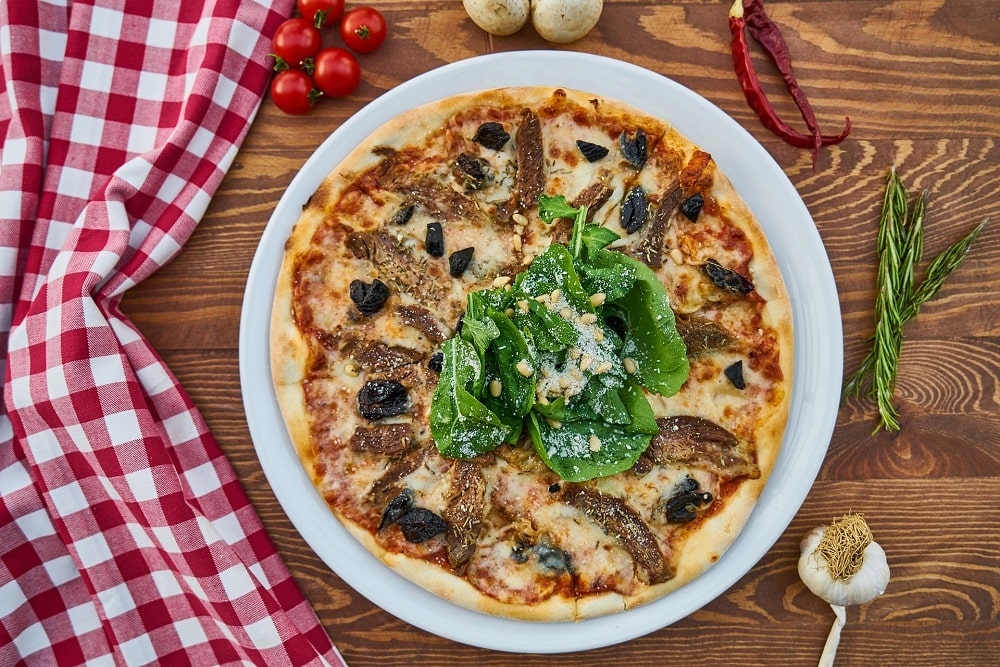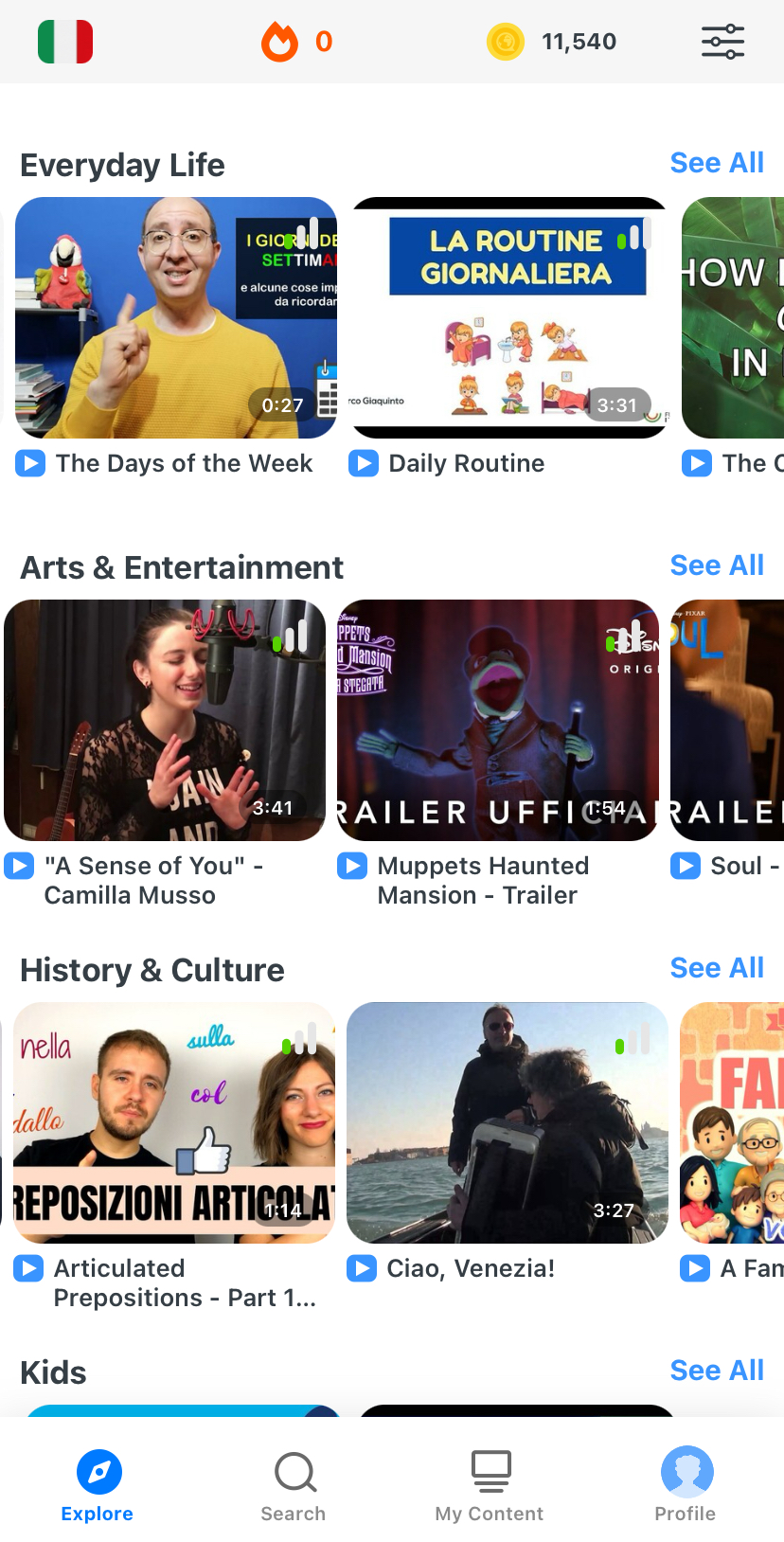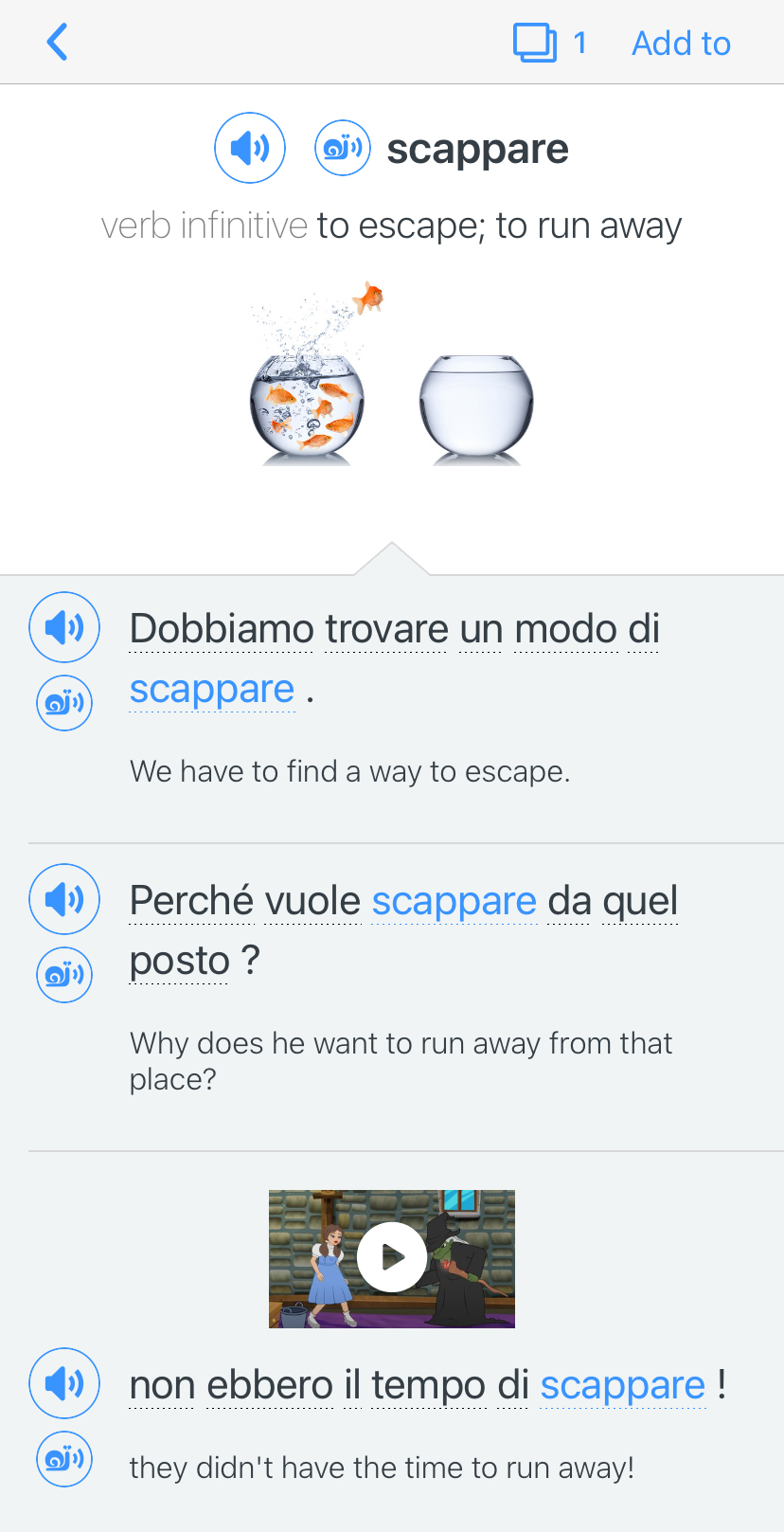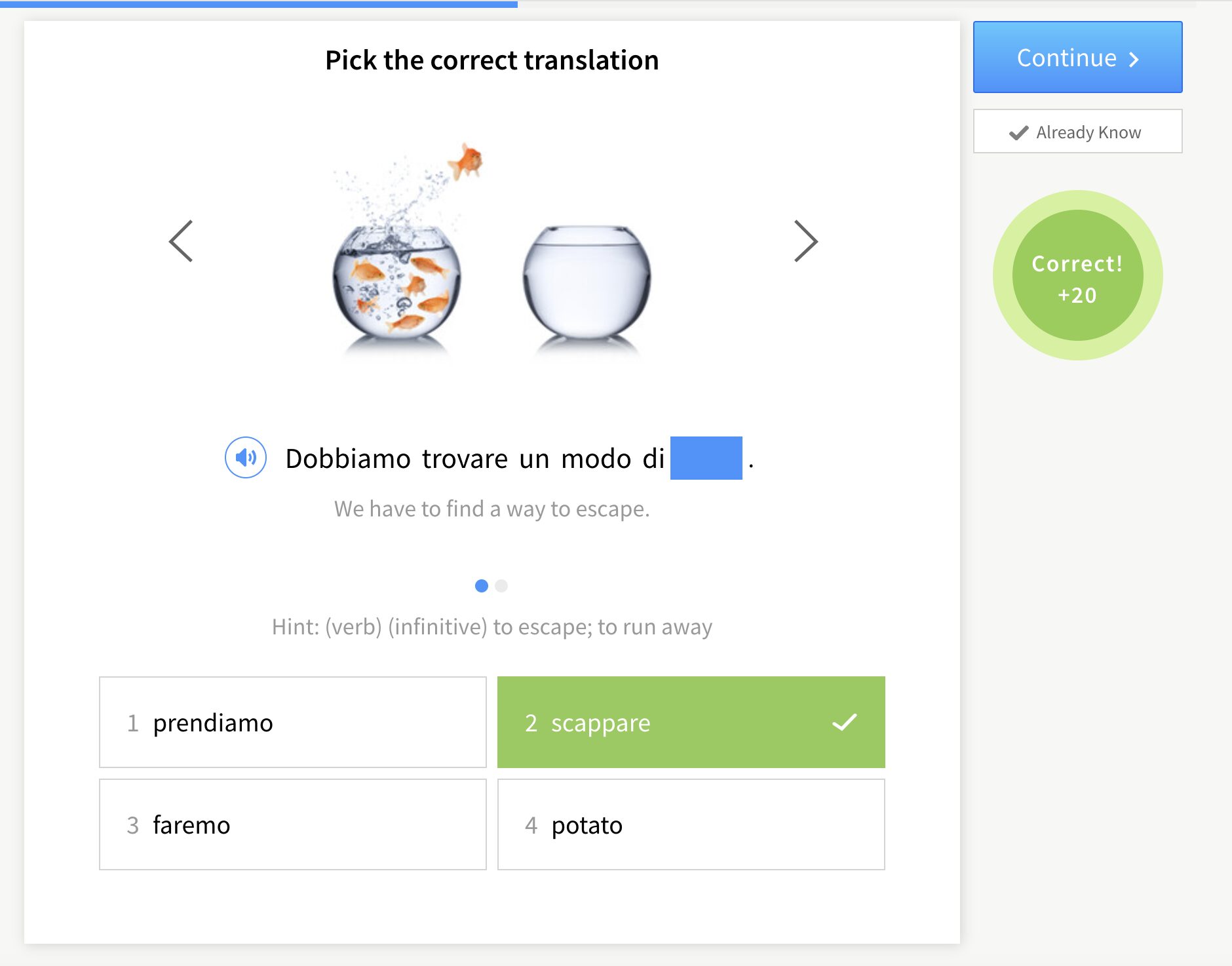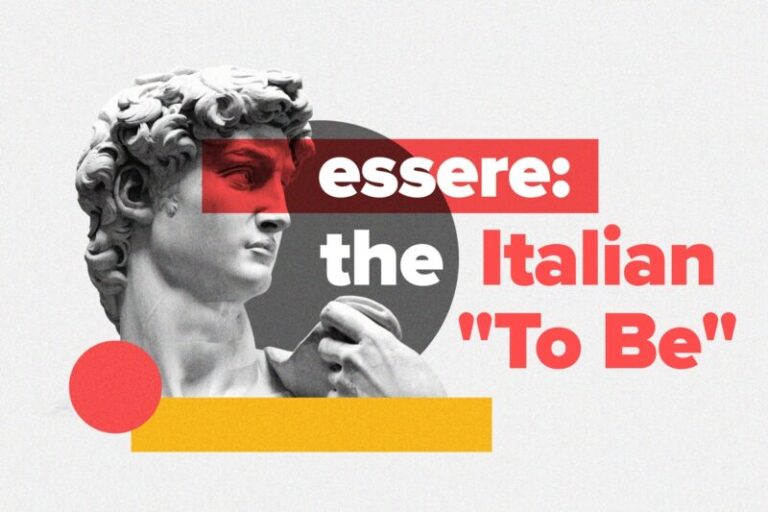Contents
- Types of Italian Restaurants
- Phrases for Entering Italian Restaurants
- Meals and Courses in Italian Restaurants
- Tableware in Italian
- How to Order in Italian Restaurants
- Important Italian Food Vocabulary and Ingredients
- Important Italian Drink Vocabulary
- Talking About Wine in Italian (and Ordering a Good One!)
- Explaining Special Dietary Needs in Italian
- Cooking Methods in Italian
- Describing Food in Italian
- Italian Phrases for After Your Meal
- Cooking in Italian: Measuring and Following Instructions
- And One More Thing…
180+ Italian Restaurant Phrases and Vocabulary

Whether you need to compliment the chef’s delicious risotto, threaten action over suspicious mathematics on the check or just order food, it’s all going to go better if you have some Italian food vocabulary.
If you’re planning a trip to Italy, these 180+ Italian restaurant phrases and vocabulary terms are essential to ensure that you have an authentic culinary experience. In this post, I’ll take you on a typical Italian restaurant experience from start to finish.
Download: This blog post is available as a convenient and portable PDF that you can take anywhere. Click here to get a copy. (Download)
Types of Italian Restaurants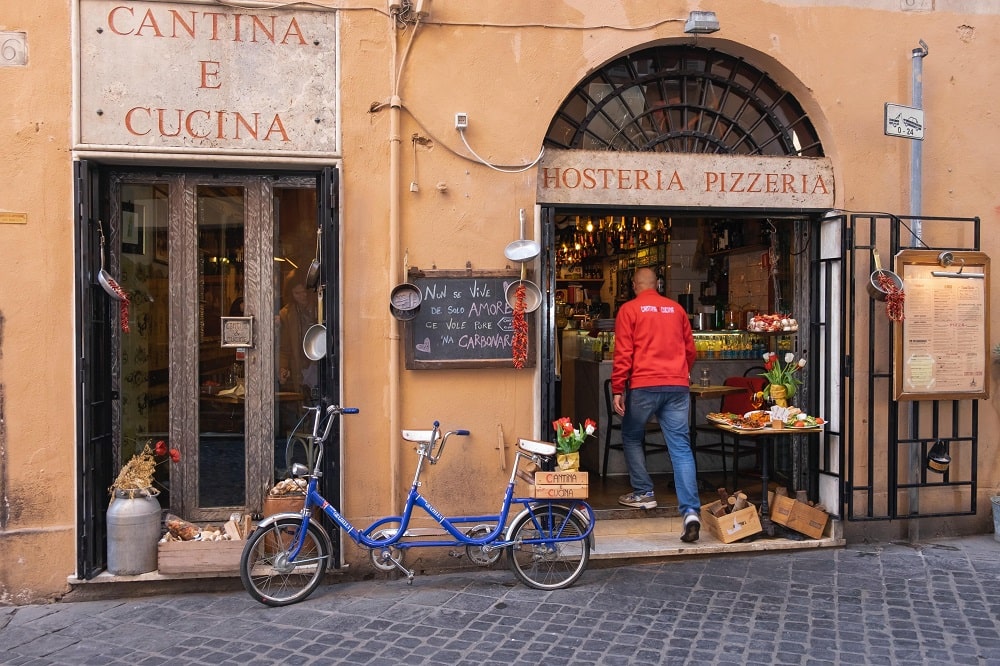
There are so many different places to choose from to eat delicious Italian food! It all depends on the time of day, what you would like to eat and the amount you are willing to spend.
Il ristorante — Restaurant
La trattoria
— Tavern
A little less formal than a ristorante, and more rustic.
La tavola calda
— Cafeteria
Tavola calda literally translates to “hot table” and they offer a range of prepared dishes that you choose from at the counter. Side dishes often cost about three euros, and main course dishes (meat, fish, etc.) are a bit more expensive.
La paninoteca — Sandwich shop, serving panini (sandwiches; note that the singular is un panino).
Il bar
/ Il caffè
— Bar/Café
These are small establishments that mainly serve drinks, as well as aperitivi (snacks/appetizers), dolci (sweets/desserts) and piccole pizze or pizzette (tiny pizzas). Note that prices are slightly cheaper if you choose to have your drink at the counter (al bar), and there may also be variance between inside (dentro) and outside (sulla terrazza) tables.
La pizzeria — Pizza restaurant/bar
Phrases for Entering Italian Restaurants
You’ll need a few phrases when you enter an Italian eating establishment not just for politeness, but also perhaps to get the attention of busy waiters.
Buongiorno — Good day
Buonasera — Good evening
Ciao — Hi (informal)
Avete un tavolo per due? — Do you have a table for two?
Siamo in due / tre / quattro — There are two/three/four of us
Per favore — Please
Grazie — Thank you
Vorremmo mangiare… — We would like to eat…
Dentro — Inside
Sulla terrazza — On the terrace
In veranda — In the veranda (a semi-enclosed space with view of outside)
In giardino — In the courtyard
Dov’è il bagno, per favore? — Where’s the bathroom, please?
Uomini — Men
Donne — Women
Zona fumatori — Smoking zone
Zona non-fumatori — Non-smoking zone
Non fumiamo — We don’t smoke
Non ci sono fumatori nel gruppo — There are no smokers in this group
Non siamo fumatori — We’re not smokers
È permesso fumare qua? — Is smoking allowed here?
Note that by law, smoking is not allowed inside Italian restaurants, but you’ll likely be allowed to smoke if you’re seated outside. You should of course refrain from doing so if you’re seated near non-smokers.
Meals and Courses in Italian Restaurants
Once you are in the restaurant and settled, what will you be ordering? It depends on the time of day!
La prima colazione
— Breakfast
In Italy, breakfast is light and simple. It usually consists of a pastry and an espresso or cappuccino.
Il pranzo
— Lunch
For many, it’s the most important meal of the day. Pranzo at home usually consists of pasta, a meat dish and a side of vegetables.
La cena
— Dinner
Locals tend to make it a lighter meal. It’s eaten later in the evening, usually around 8 p.m. or after and is typically a slow and social meal.
When you are looking through the menu, this is how the courses will likely be sorted:
Gli antipasti
— Starters or appetizers
Usually, you will find cured meats, cheeses and vegetables.
Il primo
— First course
This will usually be a pasta dish.
Il secondo
— Second course or main course (depending on what region you are dining in)
It consists of meat or fish.
Il contorno — Side-dish
Il dolce
— Desserts
These can be anything from tiramisu to gelato, panna cotta to zeppole and a number of other sweet treats.
Tableware in Italian
Is your table fully set? Do you need extra cutlery or plates? Here is what you need to ask for:
Il piatto — The plate
La ciotola — The bowl
La tazza — The cup
Il bicchiere — The glass
La forchetta — The fork
Il cucchiaio — The spoon
Il coltello — The knife
How to Order in Italian Restaurants
Once you’re settled and have had a look at the menu, it’s time to order! Below you’ll find the most common vocabulary terms and phrases for ordering food in Italian!
My recommendation for dining anywhere is to always order the most unknown thing you can find on the menu. In Italy this is a particularly useful strategy; there are many delightful dishes that you cannot eat anywhere else!
Il cameriere / la cameriera — The waiter/the waitress
Siete pronti per ordinare? — Are you ready to order?
Ancora un momento, per favore — One moment, please
Cosa mi può raccomandare? — What do you recommend?
Prendo… — I will have…
Vorrei… — I would like…
Important Italian Food Vocabulary and Ingredients
From pizza, pasta and bistecca alla fiorentina to a multitude of unique and traditional Italian dishes, there are so many delicious options to choose from!
To help you prepare, below you’ll find a list of some of the most important Italian food and ingredients:
La pizza
— Pizza
Nothing beats the perfectly executed margherita—that is, the most basic combination of tomato, olive oil, mozzarella and basil.
La zuppa — Soup
L’insalata
— Salad
You could get l’insalata caprese, with tomato, basil and mozzarella. Panzanella, or bread salad, is another delicious option.
Le polpette — Meatballs
La verdura — Vegetables
I pomodori di Pachino — A variety of very tasty large cherry tomatoes from Sicily
Le melanzane — Eggplants/aubergines
Friarielli
/ Broccoletti
/ Cine di rapa
— Broccoli rabe/rapini
A dark green leafy vegetable with small, broccoli-like buds. You find it on pizzas and in sandwiches and pasta, as well as served on its own, fried with garlic.
Il sugo
— Sauce
Sugo refers to pasta sauces (such as sugo di pomodoro, or “tomato sauce”) but can also refer to pan juices from meats.
La carne — Meat
Il pollo — Chicken
Il maiale — Pork
Il manzo — Beef
La bistecca — Steak
La milza
— Spleen
Be sure to eat this if you’re visiting Palermo, where in the local language it’s meusa and one eats a paninu ca meusa (spleen sandwich).
Il fegato — Liver
Il pesce — Fish
Le cozze — Mussels
Le vongole — Clams
I calamari — Squid
Gli scampi — Shrimp
Il granchio — Crab
Il riso — Rice
Il riso in bianco — Cooked rice (plain with nothing but olive oil)
Il risotto — Risotto
La pasta — Pasta
Il pane — Bread
Il formaggio — Cheese
La mozzarella — Mozzarella
Il mascarpone — Mascarpone (a type of cream cheese)
L’aglio — Garlic
Il basilico — Basil
L’aceto balsamico — Balsamic vinegar
L’olio d’oliva — Olive oil
Il limone — Lemon
Il sale — Salt
Il pepe nero — Black pepper
La farina — Flour
L’impasto — Dough
Il lievito — Yeast
Le uova — Eggs
Important Italian Drink Vocabulary
Your perfect meal needs the perfect drink to pair with it! Whether you are looking to order coffee in Italian, alcohol, fresh juice or water, there are lots of options to choose from!
L’acqua — Water
L’acqua naturale — Flat water
L’acqua frizzante — Sparkling water
L’acqua gassata — Carbonated water
L’acqua del rubinetto — Tap water
L’acqua effervescente naturale — Lightly sparkling water
Il cappuccino — Cappuccino
Il caffè
— Espresso coffee
You will be served a shot in a small cup with some zucchero (sugar) on the side. For a more familiar coffee, order il caffè Americano.
La cioccolata calda
— Hot chocolate/hot cocoa
In Italy, cioccolata calda is often made with cacao amaro in polvere (unsweetened chocolate powder).
Il succo di frutta — Fruit juice
Vorrei un succo cento per cento frutta
— I would like a 100 percent fruit juice
The types of small bottled juices that are available in Italy that are 100 percent actual fruit are usually only ananas (pineapple), arancia (orange) or pompelmo (grapefruit).
Il succo d’arancia — Bottled orange juice
La spremuta d’arancia — Freshly squeezed orange juice
Il digestivo — A post-dinner liqueur
La birra
— Beer
La Nastro Azzurro and Heineken are considered two of the better beer brands in Italy, at least among the brands that are commonly available everywhere.
Una marca scadente — A shoddy brand
Una marca chic — A chic brand
Il vino — Wine
Talking About Wine in Italian (and Ordering a Good One!)
If you’re passionate about wine, finding the right wine often requires more than asking for a vino rosso—you’ll want further descriptions to help you choose the perfect wine.
Il vino bianco — White wine
Il vino rosso — Red wine
Il vino rosato — Rosé
Effervescente — Sparkling
Un calice di vino — A glass of wine
Una bottiglia di vino — A bottle of wine
Il cavatappi — The corkscrew
It’s wise to memorize a few words for the type of wine you most enjoy, so that you can describe your ideal wine to a waiter.
Floreale — Flowery
Fruttato — Fruity
Secco — Dry
Velluto — Velvety
Giovane — Young
Stagionato — Aged
Robusto — Robust, high in alcohol content
Vivace — Rich, vivid, lively, spicy
Paglierino — Straw-colored
Leggero — Light
Pesante — Heavy, too strong of an alcohol content
Svanito — Opened for too long, spoiled
There are many more options for describing your wine in Italian, of course!
When you’re ready to raise your glass, you say:
Brindiamo alla salute! — Let’s make a toast!
Cin cin — Cheers (for congratulating someone or celebrating something)
Salute! — Cheers
If you’re dining with people who also speak a regional language (or dialect), I cannot emphasize enough how much more amusing your evening will be if you learn to toast like a local. Here are two local toasts to get you started:
In Naples: (Raising glasses) Aiz’ aiz’ aiz’, (lowering glasses) acal’ acal’ acal’, (bringing glasses together in the center) accost’ accost’ accost’, a salut’ vost’ — Up up up, down down down, near near near, to your health
In Sicily: Auguri e figghi masculi! — Congratuations, and male children!
This is a typical wedding toast that emphasizes the predilection for male children, but has been adopted for use in any toasting situation in Sicily.
Explaining Special Dietary Needs in Italian
Dietary restrictions are nowhere near as fashionable in Italy as they are in the U.S. or the UK. However, a few have been growing in Italy; vegetarian and vegan restaurants can be found in major cities and even some towns.
For those who really can’t eat certain foods, here’s how to express your limitations.
Sono vegano / Sono vegana — I’m vegan
Sono vegetariano / Sono vegetariana — I’m vegetarian
Sono intollerante al lattosio — I’m lactose intolerant
Seguo una dieta senza glutine — I’m gluten-free
Especially useful for vegans and vegetarians is the contorni (side dish) section of the menu and the verdure (vegetables). There may also be some pasta dishes without meat or cheese (pasta con pomodoro fresco—pasta with fresh tomatoes, or spaghetti aglio ed olio—spaghetti with garlic and oil). You can ask for una margherita senza la mozzarella (a margherita pizza without mozzarella) or an insalata senza formaggio (a salad without cheese).
Cooking Methods in Italian
Now that you know what you want to eat, how is it going to be cooked? Here are common preparation methods you will find on the menu:
Al forno — Baked
Fritto — Fried
Cotto — Well done (lit. “cooked”)
Crudo — Raw
Arrosto — Roasted
Describing Food in Italian
Here’s how you can describe fabulous dining experiences, as well as problems that may come up:
Squisito — Fabulous
Delizioso — Delicious
Gustosissimo — Tasty (more informal)
Fantastico — Fantastic
Buonissimo — Great
Troppo salato — Too salty
Manca sale — It lacks salt
Troppo piccante — Too spicy
Insipido — Bland
Bruciato — Burnt
Italian Phrases for After Your Meal
Once you’ve finished eating, it’s time to pay for the meal. It’s important to note that IVA, or sales tax, is included within the food and drink prices but may be also listed out separately on the check.
Il conto, per favore — The check, please
Possiamo avere il conto? — Can we have the check?
Vorrei pagare, per favore — I would like to pay, please
Pane e coperto
(bread and cover charge); more frequently listed as coperto
— A per-person cover charge (allowed under Italian law)
The amount of the coperto will usually be in small print at the bottom of the menu and ranges from 1 to 2.50 euros per diner.
La mancia
— The tip
This shouldn’t be on the check and is totally optional depending on what you feel like giving for the waiter’s service. In cheaper restaurants this might be just two euros per person, or rounding up the check.
Tenga il resto — Keep the change
Un errore nel conto — An error on the check
Il conto è sbagliato — The check is wrong
Scusi, sono astemio, queste due bottiglie di vino saranno di qualcun altro — Excuse me, I don’t drink; these two bottles of wine must be from someone else
Vorrei vedere il menù — I would like to see the menu (to check the prices)
Scriverò una recensione su TripAdvisor — I’ll write a review on TripAdvisor
Chiamo la guardia di finanza
— I’ll call the financial police
These are thus the most dangerous words that you can say to a business and should only to be used in extreme circumstances.
In Italy, it’s not very common to ask for a “doggy bag” for your leftovers, but if you really want to ask, be very polite, because you’re asking for something that’s not usually provided:
È possibile avere un contenitore per portare via le cose che ho lasciato? — Is it possible to have a container to take away the things that I have left over?
Grazie! Arrivederci! — Thank you! Goodbye!
Cooking in Italian: Measuring and Following Instructions
If you’ve enjoyed an Italian meal so much that you’re interested in making it at home, here are some common measures that you’ll see in Italian recipes:
Grammi — Grams (usually abbreviated to g in recipes)
Spicchio
— Slide, wedge, clove, small bunch
For instance: spicchio di prezzemolo — a bunch of parsley
Cucchiaio — Spoonful (imprecise)
In Italian recipes, verbs are often written in the plural command form, which ends in -ate, -ete, or -ite.
Generally, to get back to a dictionary form (infinitive) that you can look up, you’ll just remove the -te from the end of the word and add -re.
For example:
Mescolate → Mescolare — To blend, mix, stir
Here are some other words you’re likely to see (in their plural command forms):
Tritate — Chop up
Impastate — Knead
Versate — Pour
Utilizzate — Use
Scegliete — Choose
Trasferite — Transfer
Coprite — Cover
Friggete — Fry
Cuocete al forno — Bake in the oven
Bollite — Boil
Saltate — Sauté
Don’t be thrown when these command words have a couple-letter Italian pronoun tacked on at their tails (often l plus a vowel). These usually indicate that you should do something to the foodstuff.
For example, one might be told concerning one’s mussels:
Trasferitele in una seconda pentola. — Transfer them into a second pot.
So, there you have it!
You now have 180+ Italian restaurant phrases and food vocabulary to help ensure that you have the most delicious Italian culinary adventure possible!
To get even more practice with these phrases, keep a lookout for them in native media, such as movies and TV shows. FluentU has a vast collection of Italian media clips that feature the vocab above and more.
FluentU takes authentic videos—like music videos, movie trailers, news and inspiring talks—and turns them into personalized language learning lessons.
You can try FluentU for free for 2 weeks. Check out the website or download the iOS app or Android app.
P.S. Click here to take advantage of our current sale! (Expires at the end of this month.)
Buon appetito! (Enjoy your meal!)
Download: This blog post is available as a convenient and portable PDF that you can take anywhere. Click here to get a copy. (Download)
And One More Thing…
If you’re like me and prefer learning Italian on your own time, from the comfort of your smart device, I’ve got something you’ll love.
With FluentU’s Chrome Extension, you can turn any YouTube or Netflix video with subtitles into an interactive language lesson. That means you can learn Italian from real-world content, just as native speakers actually use it.
You can even import your favorite YouTube videos into your FluentU account. If you’re not sure where to start, check out our curated library of videos that are handpicked for beginners and intermediate learners, as you can see here:
FluentU brings native Italian videos within reach. With interactive captions, you can hover over any word to see its meaning along with an image, audio pronunciation, and grammatical information.
Click on a word to see example sentences and other videos where it's used in different contexts, then add it to your flashcards. For example, if I tap on the word "scappare," this is what pops up:
Want to make sure you remember what you've learned? We’ve got you covered. Each video comes with exercises to review and reinforce key vocab. You’ll get extra practice with tricky words and be reminded when it’s time to review so nothing slips through the cracks.
The best part? FluentU tracks everything you’re learning and uses that to create a personalized experience just for you. Start using the FluentU website on your computer or tablet or, better yet, download our app from the App Store or Google Play.
Click here to take advantage of our current sale! (Expires at the end of this month.)

